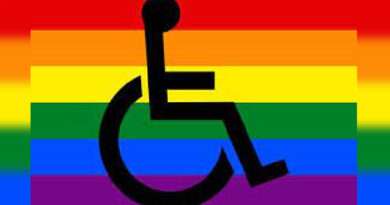A Decade After NALSA: Why Is Getting a Transgender ID in Delhi Still an Uphill Battle?
Picture via thehindu.com
In 2014, India made history. The Supreme Court’s landmark NALSA v. The Union of India judgement recognized transgender individuals as a “third gender” in the country. This for affirming their right to self-identify and access legal protections. A decade later, however, the picture isn’t as expected as one might hope, especially in Delhi, where unluckily transgender individuals continue to face endless obstacles in securing basic recognition and essential services.
One of the biggest problems is the transgender identity certificate. Although, in theory, it’s a game-change. In practice, though, it’s a labyrinth of red tape and inefficiency for those who need it.
The Transgender Identity Certificate: A Symbol of Recognition
The transgender identity certificate was conceived as a tool to provide formal recognition for transgender persons. It enables individuals to update their names and genders on official documents and access government assistance for education, healthcare, and employment. In the hope, the certificate should be empowering. However, the process of obtaining one is riddled with inefficiencies, turning what should be a straightforward administrative task into a nightmare.
Applicants must navigate a maze of medical evaluations, produce extensive documentation, and undergo an intrusive verification process. Critics argue that these requirements directly contradict the principle of self-identification outlined in the NALSA judgment. The system’s insistence on external validation undermines the autonomy of transgender persons, forcing them to justify their identities to officials who often lack the training or understanding to handle their cases compassionately.
The Evidence of a Journey Fraught with Obstacles
The statistics paint a grim picture. Activists from organizations like Delhi’s Naz Foundation report that success rates in obtaining transgender ID certificates are abysmally low. Pari, a trans woman who helps others navigate the application process, shared that out of 75 applications she assisted with, only two were approved. The process often involves repeated trips to government offices, long waiting times, and uncomfortable questioning.
One major obstacle is the requirement for family approval, which poses significant challenges for those who are estranged from their families. Many transgender individuals, especially younger ones, face rejection due to societal stigma, leaving them without the support needed to complete the process. For those living with chosen families or independently, this rule is a painful reminder of systemic exclusion.
The need for medical certification further complicates things. Applicants often must go through intrusive physical and psychological evaluations, which are unnecessary and emotionally distressing. This kind of medical validation suggests that transgender identities require external confirmation, rather than being accepted as valid on their own terms.
Why It Matters
Sadly, the failure to secure a transgender ID has far-reaching consequences for the one who needs it. Without this document, individuals are excluded from welfare programs, denied access to education and healthcare, and face additional barriers in securing employment. Discrimination in workplaces and public services remains rampant, and the lack of proper identification exacerbates this vulnerability. The transgender ID, therefore, is not just a piece of paper; it is a gateway to survival and dignity.
For a community that has faced long-standing discrimination, the inability to gain official recognition traps individuals in cycles of poverty, stigma, and exclusion. The delays and complications in the transgender ID process expose a gap between what policies promise and how they are applied, leaving many transgender people without legal or social security.
A Global Perspective on Transgender Recognition
The challenges faced by India’s transgender community are not unique. Factually, transgender individuals around the world encounter similar struggles in gaining legal recognition. In the United States, for example, requirements for gender marker changes on IDs vary by state, with some jurisdictions still mandating proof of medical interventions. In the United Kingdom, the process to obtain a Gender Recognition Certificate is criticized for being overly bureaucratic and invasive.
However, there are success stories that India can look to for inspiration. Countries like Argentina and Malta have implemented progressive self-identification laws, allowing transgender individuals to update their documents without medical or psychological evaluations. These policies demonstrate that simplifying the process not only affirms human dignity but also reduces administrative inefficiencies.
Steps Toward Change
What can be done to improve the transgender ID process in India? Activists and experts propose several solutions:
- Respect Self-Identification: Remove the need for medical certification and family approval, so that the process aligns with the NALSA judgment, which emphasizes the right of transgender people to define their own identity.
- Simplify the Process: Make the paperwork easier to understand and create online portals for applications, reducing the need for multiple trips to government offices.
- Train Officials and Healthcare Workers: Provide training to those involved in the process to ensure they treat transgender individuals with kindness and understanding.
- Strengthen Complaint Systems: Set clear timelines for processing applications and offer clear ways for people to report delays or mistreatment during the process.
- Support Transgender Welfare Boards: Increase funding for transgender welfare boards to help them play a more active role in assisting applicants and addressing problems in the system.
- Increase Awareness: Launch public education campaigns to raise awareness about transgender rights, helping to challenge the stigma that contributes to many of the barriers faced by the community.
A Decade Later: Reflections and Hopes
As India marks ten years since the NALSA judgment, it is an opportune moment to reflect on its impact. While the ruling was groundbreaking in its recognition of transgender rights, its implementation has been patchy at best. For many in Delhi and across the country, the promises of the judgment remain out of reach.
The transgender ID process serves as a litmus test for the state’s commitment to equality. If India is to fulfill the vision set forth in 2014, systemic reforms are urgently needed. Simplifying the transgender ID process is not just a matter of administrative efficiency; it is a moral imperative that affirms the humanity and dignity of a marginalized community.
The fight for transgender rights is far from over, but it’s one that must be pursued with urgency and determination. India has the chance to become a global leader in inclusion by addressing these systemic failures head-on. The time to act is now, and the path forward starts with ensuring every transgender person has the dignity and rights they deserve.
Work Cited:
- The Wire: The Wire News India, Latest News,News from India, Politics, External Affairs, Science, Economics, Gender and Culture
- NALSA Judgement of 2014 Was ‘Pathbreaking’. But Has It Really Made India More Trans-inclusive? – News18
- Delhi’s transgender community struggles to access crucial identity document


